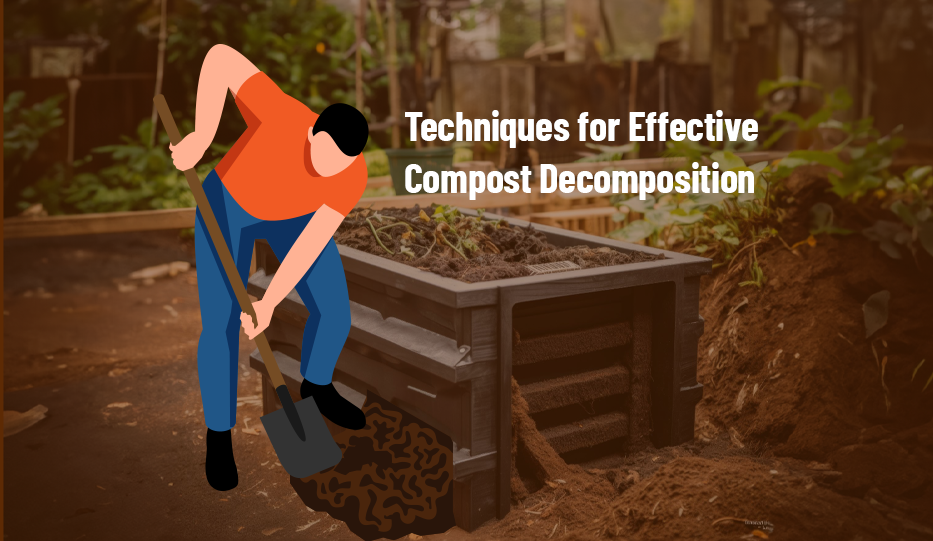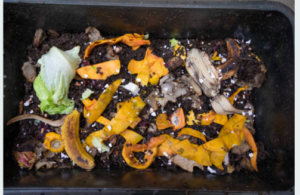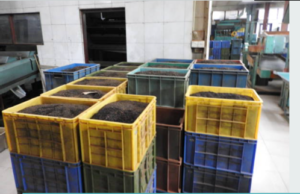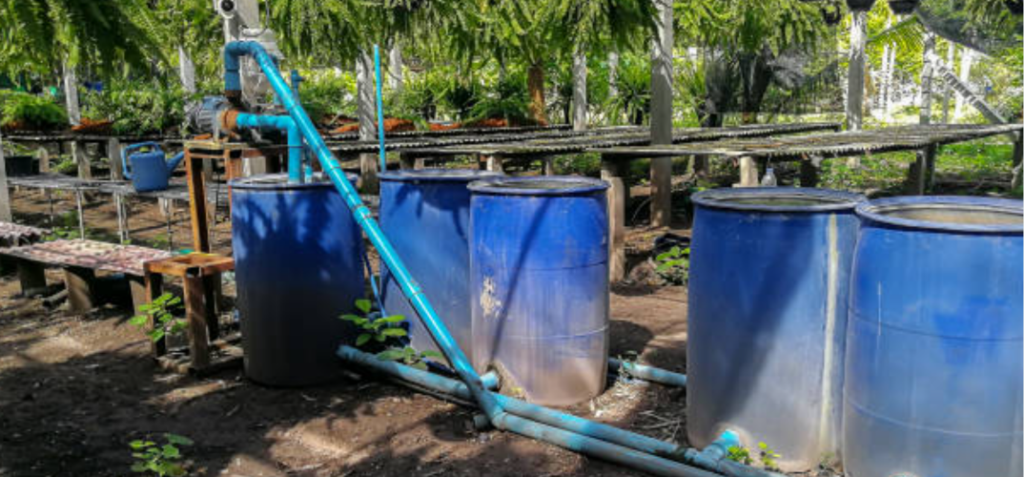Exploring Composting Techniques
Aerobic Composting
Aerobic composting involves providing oxygen to the compost pile to support the growth of aerobic microorganisms that break down the organic material and is typically faster than other methods and produces a higher-quality compost.
Here are the technical guidelines for aerobic composting:
- The ideal size of the composting bin should be around 1 meter in height and 1.5-2 meters in width.
- The ideal carbon-to-nitrogen ratio for composting is between 25:1 and 30:1.
- The moisture content of the compost pile should be between 50-60%.
- Turn the compost pile every 2-3 weeks to provide adequate aeration.
- The composting process can take between 1-6 months, depending on the type of waste and the composting conditions.
Anerobic Composting
Anaerobic composting is a process of decomposing organic waste in the absence of oxygen. It is a popular method of waste management in India, where large quantities of wet waste are generated daily.
Here are some technical guidelines for anaerobic wet waste composting in India:
- Site selection: The site for the composting plant should be located away from residential areas and water bodies. It should have good drainage and be easily accessible for waste collection and transport.
- Waste shredding: The biodegradable waste should be shredded into small pieces to facilitate decomposition.
- Mixing of waste: The shredded waste should be mixed with cow dung or other organic material to create a homogenous mixture. The ratio of waste to organic material should be maintained at 3:1.
- Piling: The mixture should be piled in a pit or a composting bin. The height of the pile should not exceed 1.5 meters.
- Turning of the pile: The compost pile should be turned at regular intervals to ensure proper aeration and mixing of the compost. The frequency of turning should be once a week.
- Curing: Once the compost is ready, it should be cured for 4 to 6 weeks before use. During the curing process, the compost should be turned once a week.
- Quality control: The quality of the compost should be monitored regularly using a compost meter. The pH of the compost should be between 6.5 to 8.5, and the carbon to nitrogen ratio should be between 20:1 to 30:1.
By following these technical guidelines, anaerobic wet waste composting can be a successful and effective method of waste management in India.
Vermicomposting
Vermicomposting is a type of composting that involves the use of earthworms to decompose organic waste into nutrient-rich compost. In India, vermicomposting technology has gained popularity over the past few decades due to its several advantages such as the production of high-quality compost, reduction in waste generation and landfill disposal, and the potential for income generation.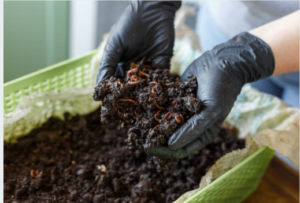
Here are the technical guidelines for vermicomposting:
- Design and construction: The vermicomposting unit should be designed and constructed in a manner that allows for proper drainage, aeration, and temperature control. The size of the unit should be based on the quantity of waste to be processed.
- The ideal size of the vermicomposting bin should be around 1 meter in height and 1-1.5 meters in width.
- Site selection: The vermicomposting unit should be located in a well-ventilated area with access to water and electricity.
- Feedstock selection: The feedstock for vermicomposting should be a mix of organic waste such as food waste, vegetable waste, and yard waste. The feedstock should be shredded or chopped to facilitate the feeding process.
- The worms used for vermicomposting should be surface-dwelling species such as red worms or tiger worms.
- Maintenance:The moisture content of the vermicomposting bin should be between 70-80%.
- Harvesting: The vermicompost should be harvested once it reaches maturity, which is indicated by a dark brown colour and earthy smell.The harvested vermicompost should be sieved to remove any large particles. The vermicomposting process can take between 1-4 months, depending on the type of waste and the composting conditions.
Some general guidelines on the capacity of vermicomposting units based on the quantity of waste to be processed:
- Household Scale: For household vermicomposting units, the quantity of waste to be processed is usually around 1-2 kg per day. The capacity of the unit can range from 10-50 litres.
- Community Scale: For community vermicomposting units, the quantity of waste to be processed can range from 50-500 kg per day. The capacity of the unit can range from 500-5000 litres.
- Commercial Scale: For large-scale commercial vermicomposting units, the quantity of waste to be processed can be several tonnes per day. The capacity of the unit can range from 10,000-50,000 litres or more.
A brief guide on Vermicomposting >
Mechanical composting
Mechanical composting is a method of composting organic waste that uses machines to speed up the process and produce high-quality compost. Here are some technical guidelines for implementing mechanical composting in India:
- Location: Choose a location that is well-drained, away from water bodies, and at a safe distance from residential areas to prevent odor nuisance.
- Preparing the composting material: The composting material should be a mixture of brown and green organic waste, such as dry leaves, grass clippings, kitchen waste, and cow dung. The carbon to nitrogen ratio should be between 25:1 and 30:1.
- Shredding: The waste should be shredded before being added to the machine to improve the efficiency of the composting process.
- Adding the composting material to the machine: The composting material should be added to the machine in layers, with the first layer being about 10cm thick.
- Moisture management: The composting material should be kept moist but not waterlogged. Sprinkle water on the composting material if it appears dry.
- Turning the compost: Depending on the type of machine, the compost may need to be turned periodically to ensure that it decomposes evenly.
- Composting time: The composting process takes between 2-4 weeks, depending on the type of machine and the quantity and type of waste.
- Using the compost: The compost can be used as a soil amendment in gardens, agriculture, and horticulture.
- Maintenance of the machine: The machine should be cleaned and maintained regularly to ensure that it is working efficiently.
It is important to note that the guidelines may vary depending on the type of machine and the local regulations. Therefore, it is recommended to consult with experts and relevant authorities before implementing a mechanical composting system.
